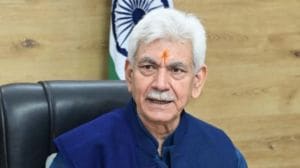Will we miss the telecom revolution?
Internet telephony, bandwidth, converging networks, CDMA, UMPCS. Much of this is Greek to most of us who use telephones either for just c...

Internet telephony, bandwidth, converging networks, CDMA, UMPCS. Much of this is Greek to most of us who use telephones either for just conversing, surfing the Net or for sending or receiving data in the form of e-mails. Nor is it essential that we should understand this jargon. What’s important, though, is that we understand how a revolution is once again changing the entire face of global telephony.
In a nutshell, what the current telecoms revolution is doing, is making it possible, at a price of course, for an individual to have one number where he can be reached anywhere in the world. Second, and most important, it is drastically slashing the costs of all telecom services across the world.
What’s unfortunate, however, is that this is likely to bypass India since telecom’s ruling deities the Department of Telecom refuses to recognise the fact that our current (though new) telecom policy is already outdated.
The Ministry of Finance also appears to be towing DoT’s line, though for a different reason. Here’s a few reasons why the telecom revolution will pass India by if the current telecom policy isn’t junked:
Internet Telephony: While it is illegal in India, since the government wants to protect the monopoly of the state-owned VSNL, Internet telephony can reduce the costs of long-distance calls to a sixth (in its April 11 issue, several editions of The Indian Express featured an article on what Internet telephony, though illegal, was doing to call rates in India). In the west, where Internet telephony is legal, telephone companies are merging with Internet providers to be able to offer cheaper services – long distance rates will soon be broadly comparable with those for local calls.
Merger of wireless and conventional telephony: With both services now converging, it is possible to offer conventional fixed telephone connections in areas which do not even have any telephone lines this is called the Wireless in Local Loop. Use of WILL also enables companies to offer mobile telephone services the range of services is still somewhat limited at rates which are lower than those provided by conventional cellular operators. The MTNL is providing some experimental services using WILL in Delhi. But, by and large, the government is not in favour of allowing such merging of services.
Satellite mobile phones: Though awfully expensive right now with air time costing around $3 a minute, costs are coming down rapidly, especially in areas where the satellite footprint is under-utilised.
Obviously then, it makes sense for India to discontinue with the current policy of artificial segregation between different types of telecom services right now, we have separate operators each for conventional telephone services, cellular networks, and for Internet services.
But the reason why the government does not want to change this is also obvious. Making Internet telephony legal, for example, will not only make the state-owned VSNL bankrupt since it gets its money by over-charging consum-ers for international calls, it will make most of the new operators of private basic telecom services unviable. One of the reasons why the basic operators bid very high rates for their licences was because they were waiting for the lucrative long-distance market to open up and were confident that they would make big money from it. But once Internet telephony is allowed, the basic licences obviously won’t be worth too much.
In the event, the fat licence fees are obviously in jeopardy. Similarly, allowing basic phone operators to stray into cellular territory and vice versa will also compromise licence fees which are expected from the cellular licensees.
But the issue is not simply of lowering licence fees, or of giving two-year moratoriums, for existing basic and cellular operators, as is being demanded by them. This will certainly make life easier for these operators who have burnt their fingers by bidding astronomical amounts when the industry was opened up to them a few years ago. Lowering licence fees will also lower call rates. But what this will not do is to allow these operators to take advantage of what technology has to offer. In the event, India’s consumers are unlikely to taste the benefits of the current telecom revolution.
One of the solutions being tossed around in the task force on telecoms right now, in fact, is to virtually scrap the current system of licensing; to auction bandwidth (the cable through which all telephone signals are transmitted); and to let operators offer any service they want to. From the consumers’ point of view, it is obvious, it makes perfect sense.
The DoT is opposing it since it will smash its hegemony, the Finance Ministry is apprehensive this will kill its future revenue stream, and local operators who have already won licences fear this will leave the business in the hands of a few genuine telecom giants, mainly those from abroad. Frankly, the fact that consumers will benefit should prevail over the DoT’s apprehensions, and the Finance Ministry’s fears are exaggerated since few operators are paying their licence fees right now anyway.
And while inefficient local companies will certainly lose out, they should keep in mind the fact that the new system will lower their licence fee obligations considerably. Seems a win-win formula.






- 01
- 02
- 03
- 04
- 05

























